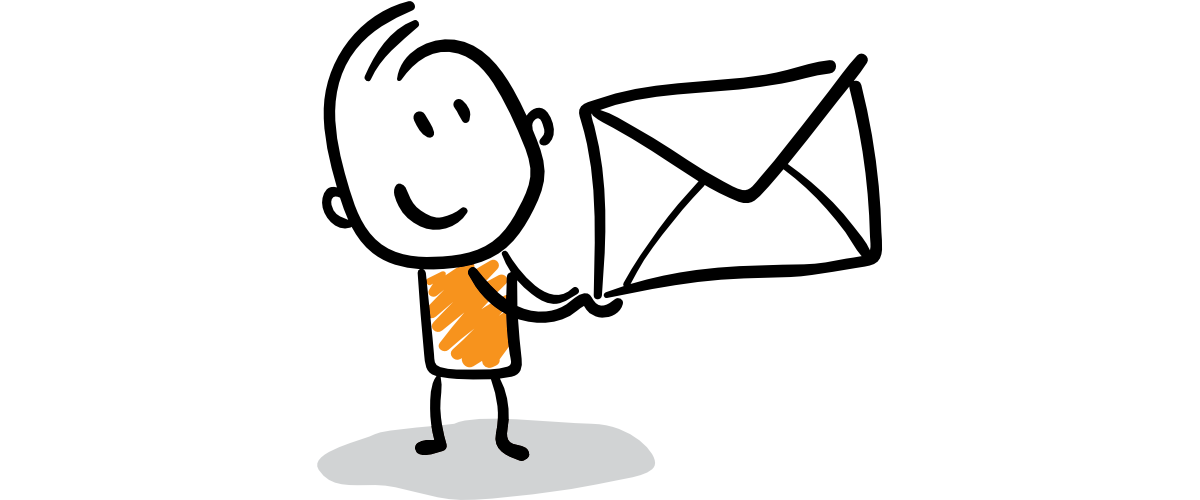This simple step gets more people to read your emails
👉 it takes less than a minute but makes a big difference
Today I’m going to show you how to nail what I’ve found is the most overlooked part of an email or newsletter.
Get it right and you’ll get substantially more people reading your full email.
Get it wrong and they’ll bail after the first few sentences.
And sadly, most people don’t even consider it. Read on and you’ll be streets ahead…
Think about what you do when you read an email.
Usually the first things you notice are the sender’s name and the subject line.
If you’re familiar with the sender and know they send useful and interesting emails, and if the subject line looks like you’ll get something from this particular email then you’ll open it.
But that doesn’t mean you’ll read all of it.
When we open emails we’re kind of like Scooby Doo searching for Scooby Snacks in a haunted house. He’ll open up door after door, stick his head in and look around.
If he spots some food, he’ll step into the room. But if not - and especially if there’s something scary in there - he’ll skedaddle off to the next room.
With email, we’re the same.
The sender name and subject line are enough to get us to open the email with anticipation. But they’re not enough to get us to read the full email. Especially if it’s quite long.
Instead, we’ll take a look at the first paragraph or so. If it feels like the email is going to give us some kind of interesting and useful Scooby Snack, we’ll read on.
If not, we’ll skedaddle off to the next email.
So those first few sentences or paragraphs are vital. Yet most people rarely think about them.
Most people just start writing.
Often - like with this email - they’ll need to explain something complex in order for their readers to get the point. In this case, I needed to talk about the way people read emails and the fact they don’t automatically read every email they open.
But opening your email with an explanation of something is usually a mistake because it’s not interesting and useful in its own right. It’s something scary (or at best, non-snacky) that will cause many of your readers to skedaddle.
Instead, you need to write with a tentative reader in mind. Someone who hasn’t made their mind up yet on whether they’re going to read your full email. You need to let them see something appetising that will motivate them to read on.
There are lots of ways of doing that.
You can open with an intriguing story. A startling fact. A surprising quote. A challenging question.
Or like I did, you can simply tell people you’re about to reveal something useful for them that they probably don’t already know:
“Get it right and you’ll get substantially more people reading your full email. Get it wrong and they’ll bail after the first few sentences" tells the reader this is valuable information.
“And sadly, most people don’t even consider it. Read on and you’ll be streets ahead…” subtly tells them this is something new they won’t have heard before.
It doesn’t matter which method you use. What’s important is that when you’re writing your email you pause and ask yourself “If someone opened this email a bit unsure about whether they’re going to read it, will the first few sentences help them decide they should?”
Even small changes can be important.
The original first sentence of this email was “Today I’m going to focus on what I’ve found is the most overlooked part of an email or newsletter.”
After reading it and asking myself the question I changed it to “Today I’m going to show you how to nail what I’ve found is the most overlooked part of an email or newsletter.”
I switched the emphasis from the email being a discussion about a topic to the email giving a valuable solution.
Because - by and large - people don’t open my stuff out of academic interest. They want to know how to improve their emails.
So really, that’s the key. Don’t assume that because people have opened your email they’ll read the whole thing.
Spend 60 seconds each email thinking “If someone opened this email a bit unsure about whether they’re going to read it, will the first few sentences help them decide they should?”
And if those first few sentences aren’t going to get people to read on, rewrite them so they will.
- Ian



This is like me with books. If I'm not captivated in the first chapter I rarely if ever reopen the book to plug through it.